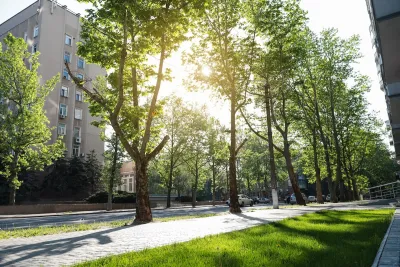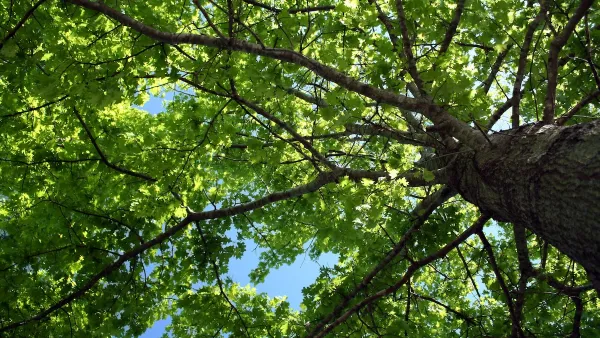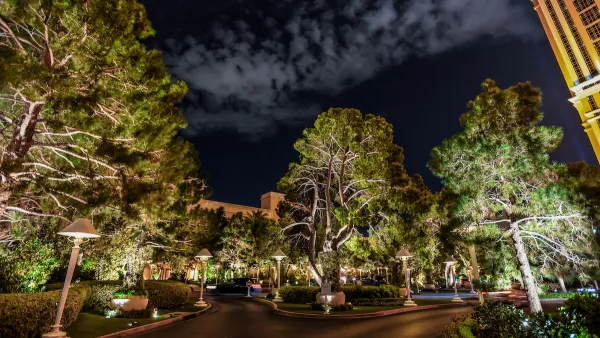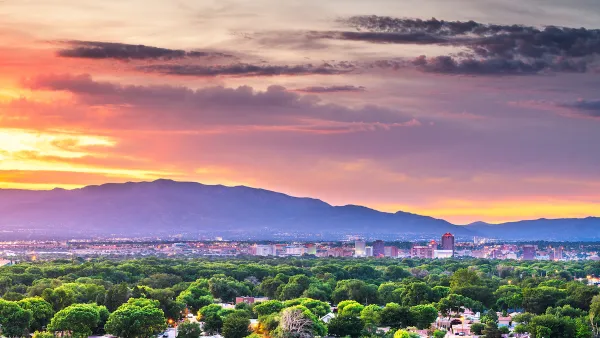Far from just providing shade and improving air quality, trees can also contribute to more resilient roads, lower energy costs, and reduced flood risk.

In a piece on Strong Towns, Emma Durand-Wood extols the many benefits of urban trees, which contribute to everything from cooler temperatures to cleaner air to higher property values.
Money talks. While the critical environmental benefits that trees provide (like capturing carbon, cleaning the air and supporting biodiversity) have tremendous and calculable value, advocating for trees on an environmental basis isn’t always effective.
To that end, Durand-Wood outlines some of the tangible, economic benefits of street trees. These include, surprisingly, longer lasting roads: “street trees prolong the life of road surfaces by keeping them cooler and reducing temperature fluctuations.” According to one study, the amount of shade on a street is directly correlated to the length of time needed between repaving treatments.
Another benefit: less flooding, since “A mature tree can intercept 30%-40% of rainfall before it even hits the ground.” Trees also create more comfortable and safe walking and biking conditions, provide shade at bus stops and in public spaces, and help reduce cooling bills by lowering surrounding air temperature.
Durand-Wood concludes, “Planting and maintaining street trees is an investment, but it’s one that pays for itself over and over again.” According to a USDA study, every dollar spent on planting and maintaining urban tree canopies yields between $1.37 to $3.09 in benefits.
FULL STORY: The Multitasking Marvel: How Street Trees Can Solve Many Municipal Problems

National Parks Layoffs Will Cause Communities to Lose Billions
Thousands of essential park workers were laid off this week, just before the busy spring break season.

Retro-silient?: America’s First “Eco-burb,” The Woodlands Turns 50
A master-planned community north of Houston offers lessons on green infrastructure and resilient design, but falls short of its founder’s lofty affordability and walkability goals.

Delivering for America Plan Will Downgrade Mail Service in at Least 49.5 Percent of Zip Codes
Republican and Democrat lawmakers criticize the plan for its disproportionate negative impact on rural communities.

Test News Post 1
This is a summary

Test News Headline 46
Test for the image on the front page.

Balancing Bombs and Butterflies: How the National Guard Protects a Rare Species
The National Guard at Fort Indiantown Gap uses GIS technology and land management strategies to balance military training with conservation efforts, ensuring the survival of the rare eastern regal fritillary butterfly.
Urban Design for Planners 1: Software Tools
This six-course series explores essential urban design concepts using open source software and equips planners with the tools they need to participate fully in the urban design process.
Planning for Universal Design
Learn the tools for implementing Universal Design in planning regulations.
EMC Planning Group, Inc.
Planetizen
Planetizen
Mpact (formerly Rail~Volution)
Great Falls Development Authority, Inc.
HUDs Office of Policy Development and Research
NYU Wagner Graduate School of Public Service





























